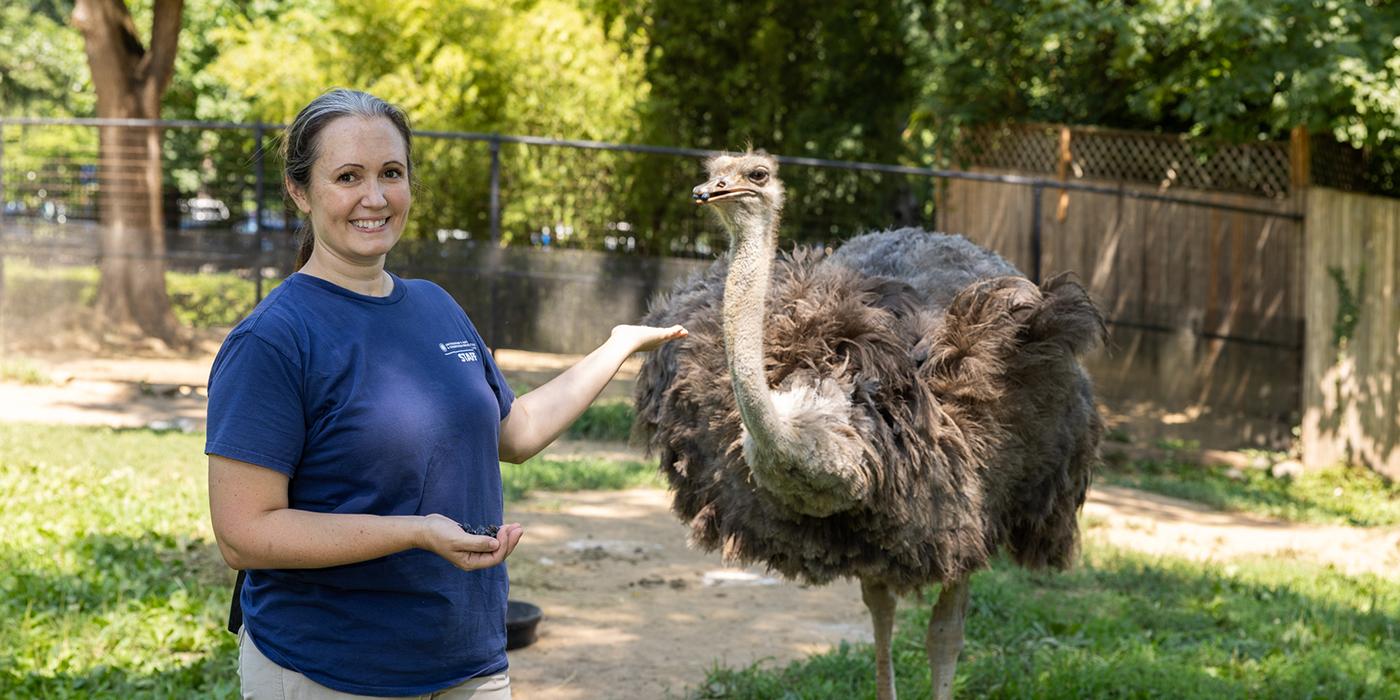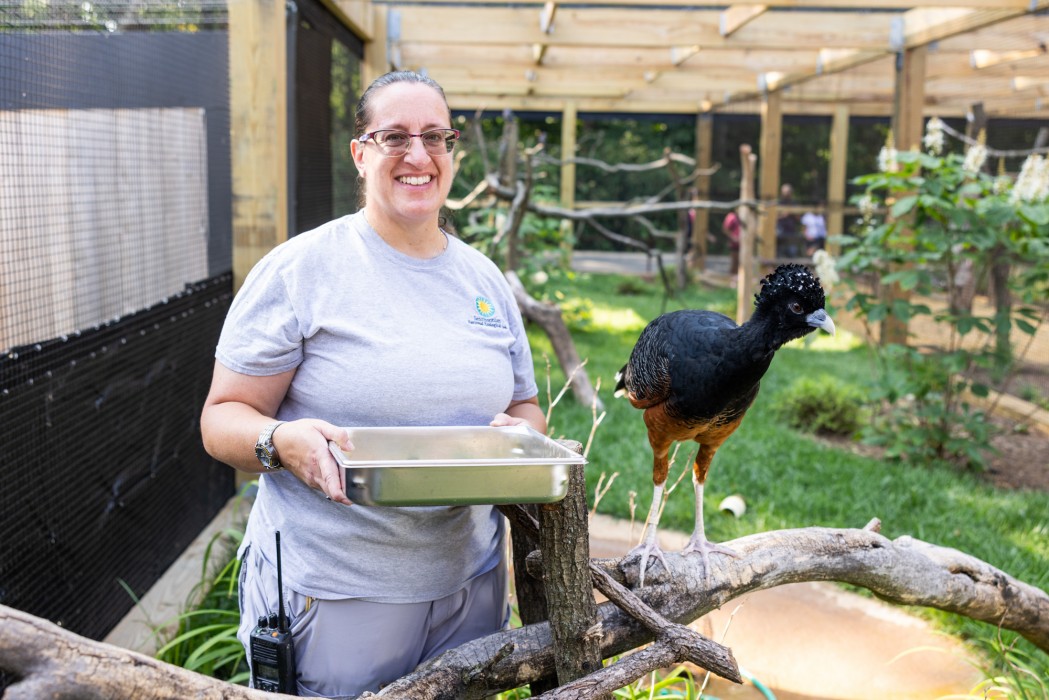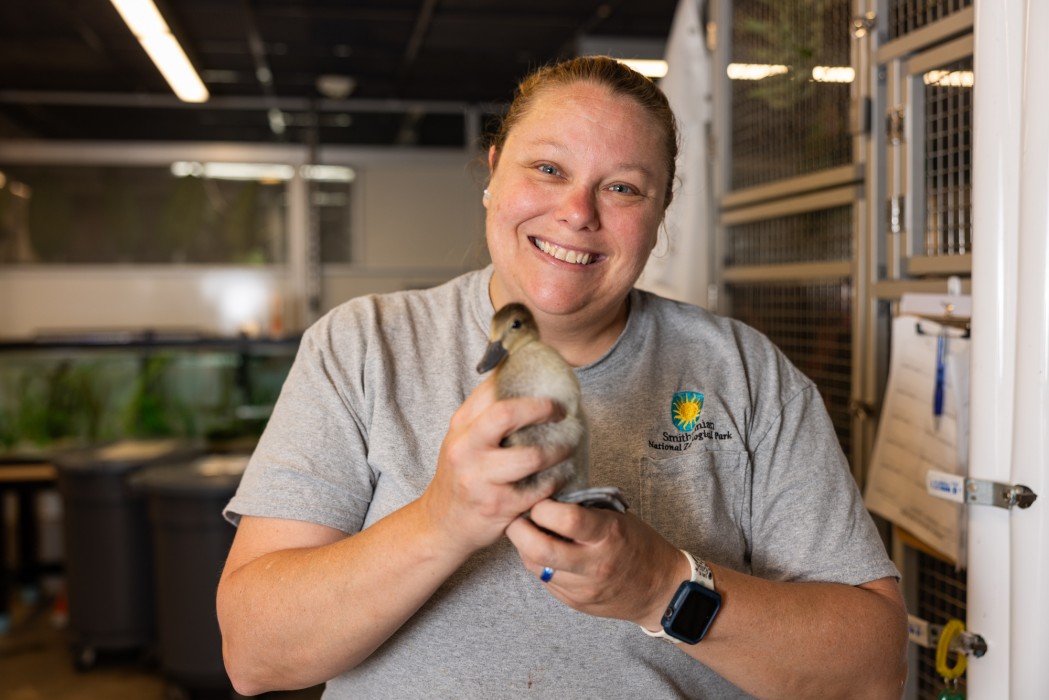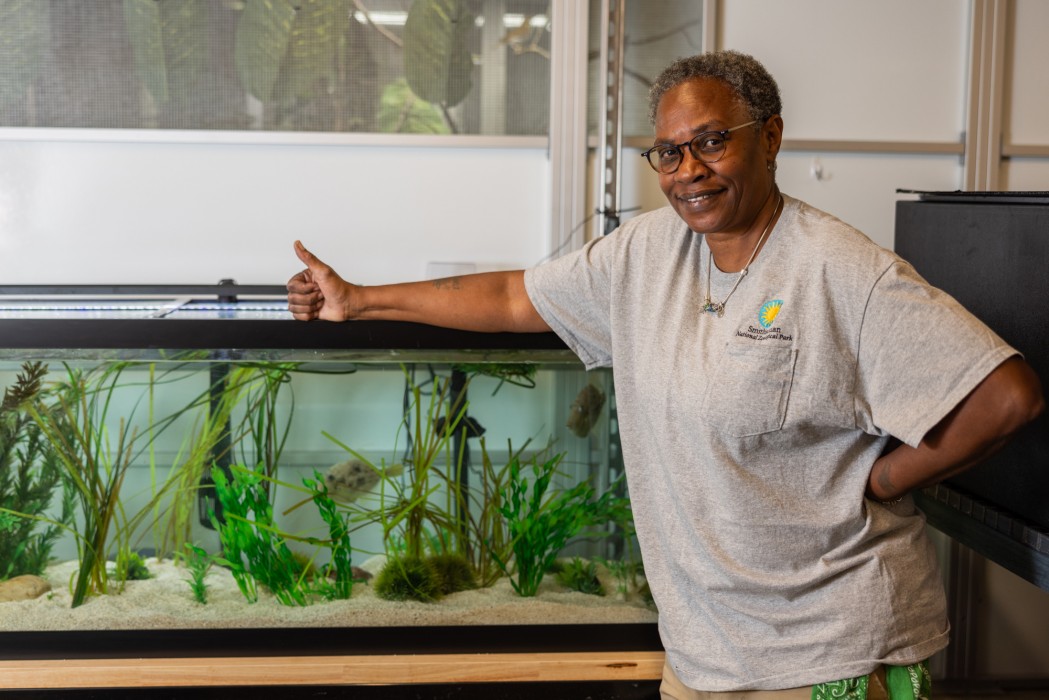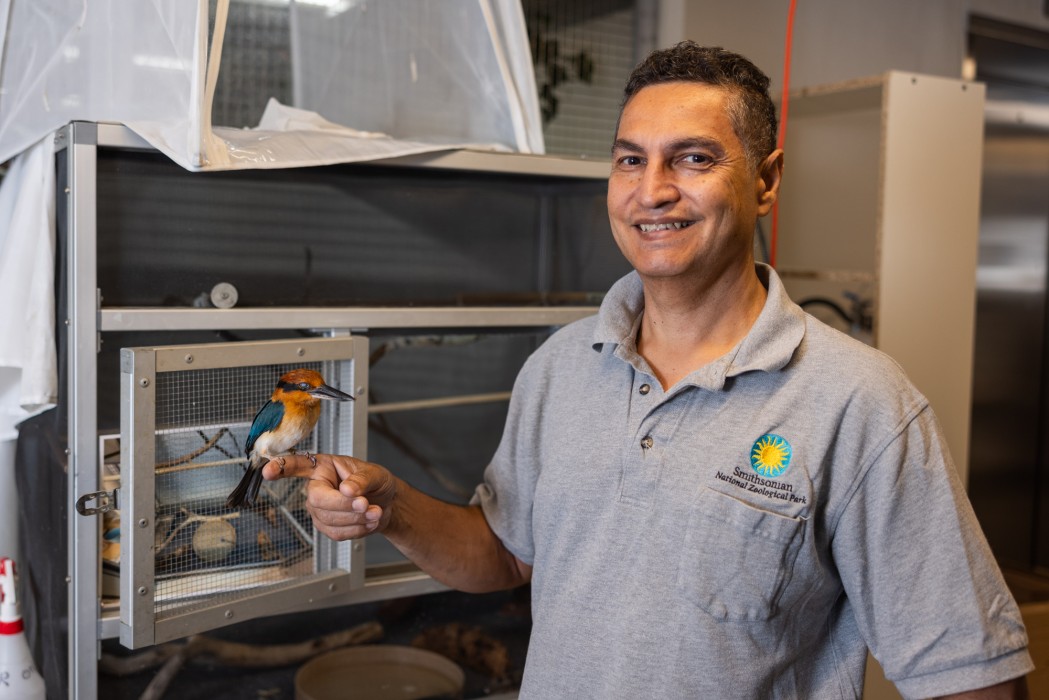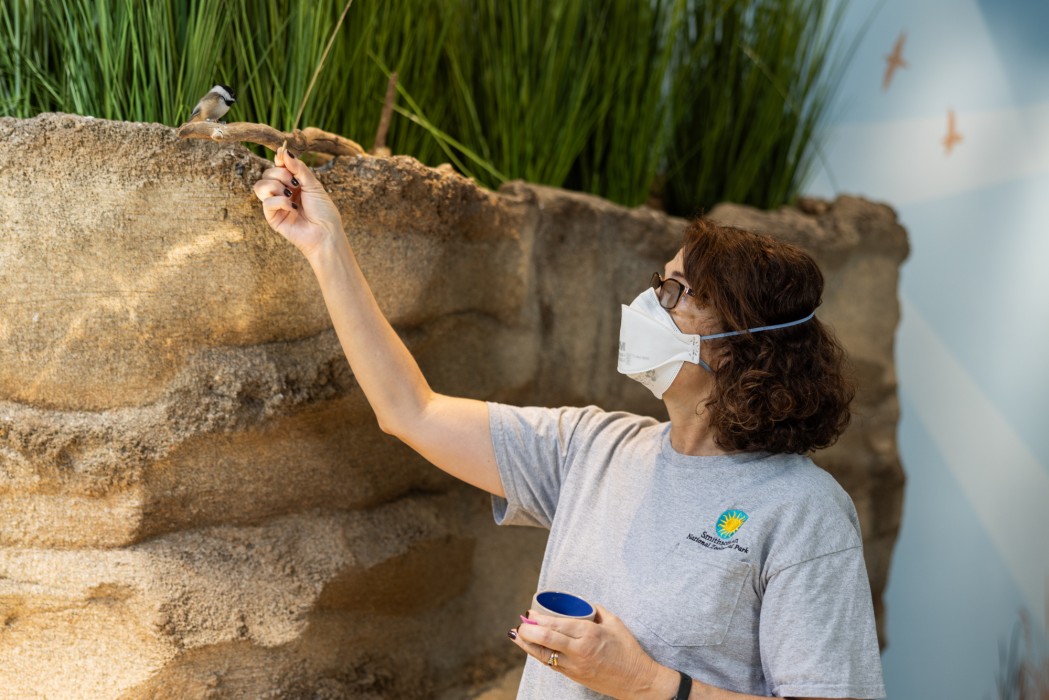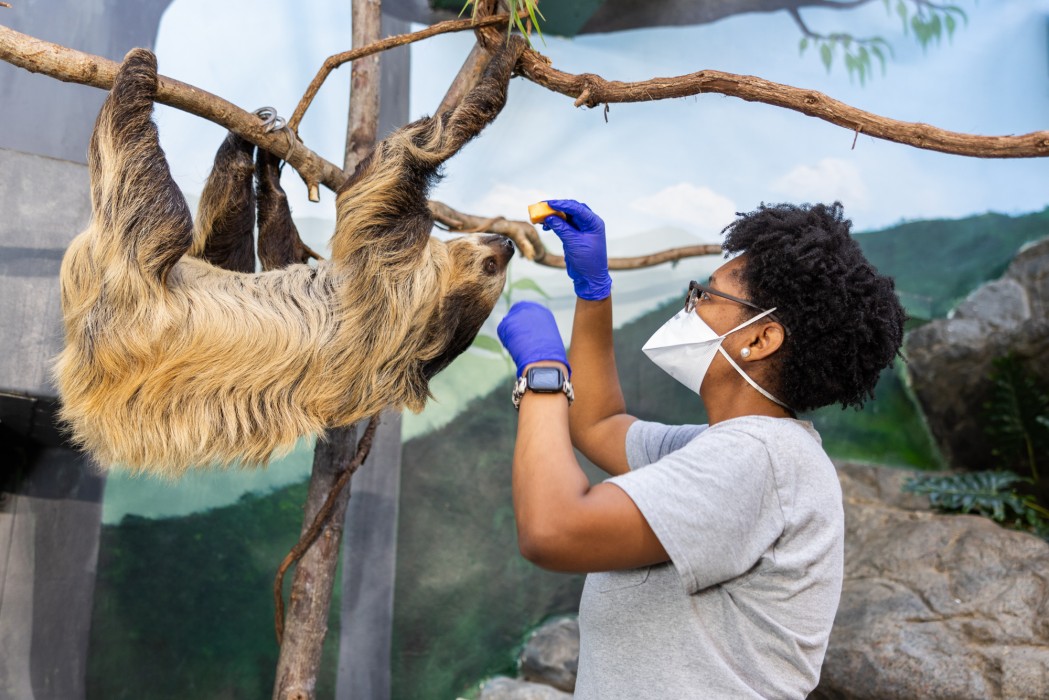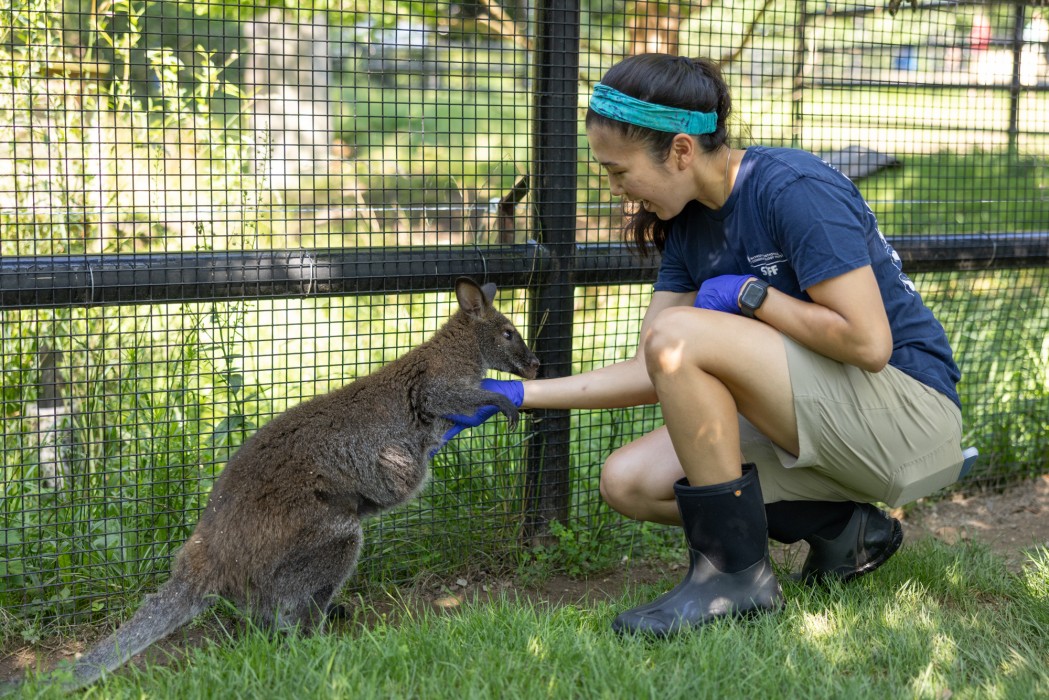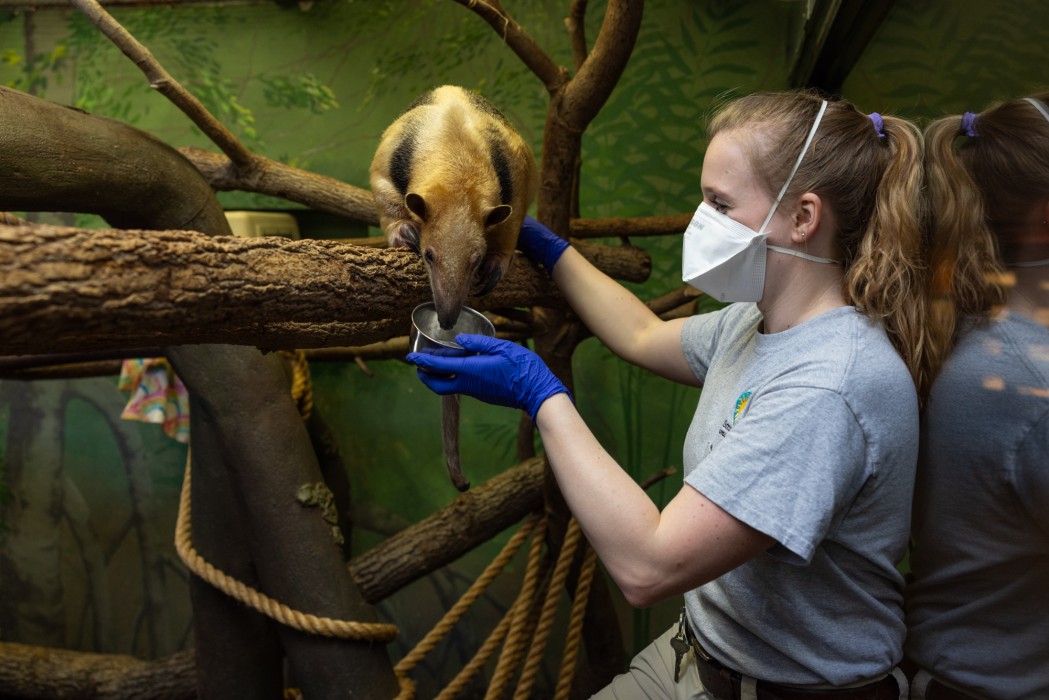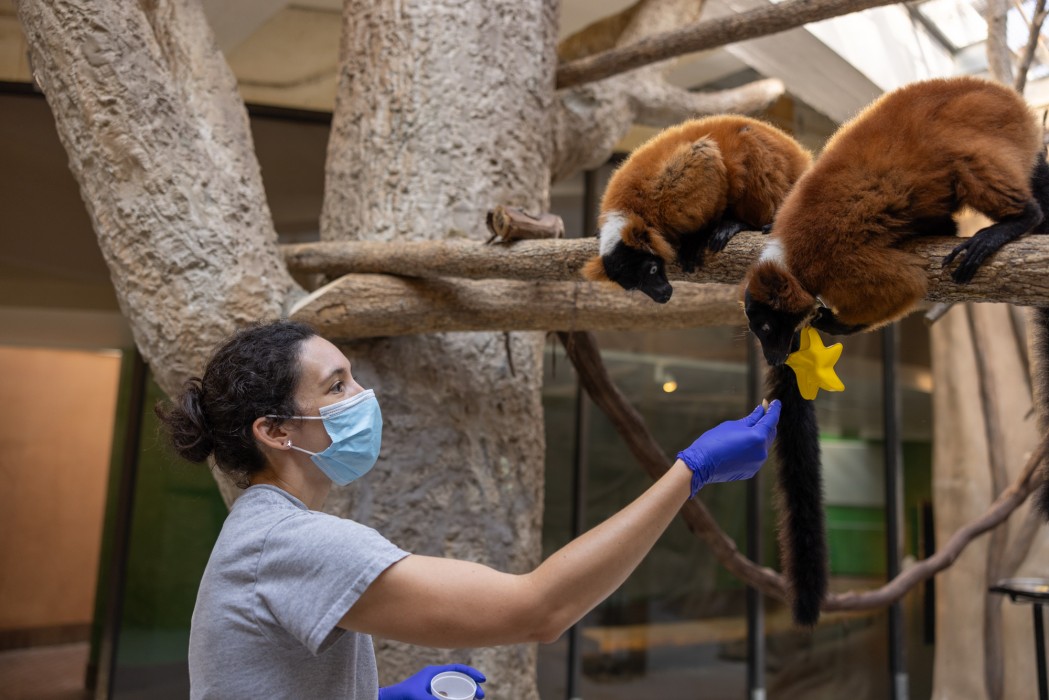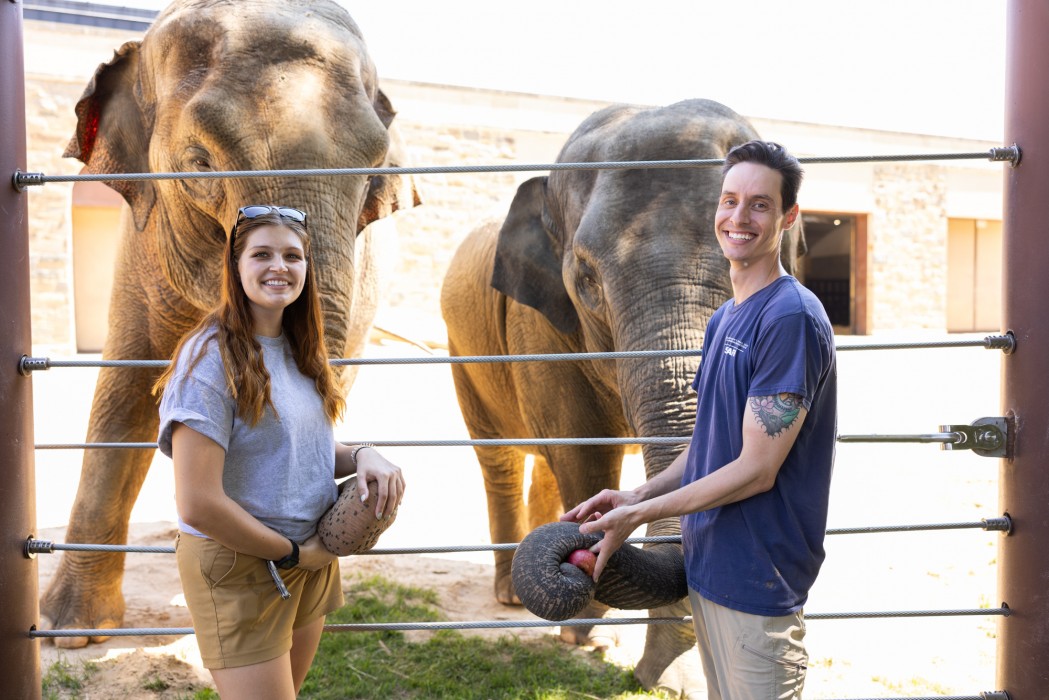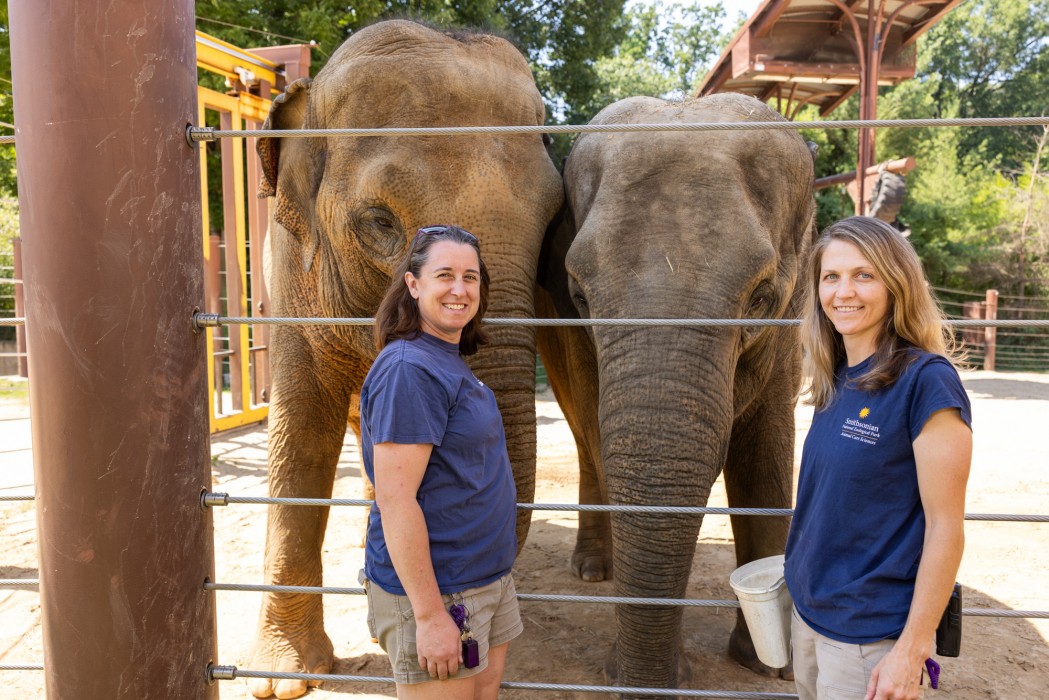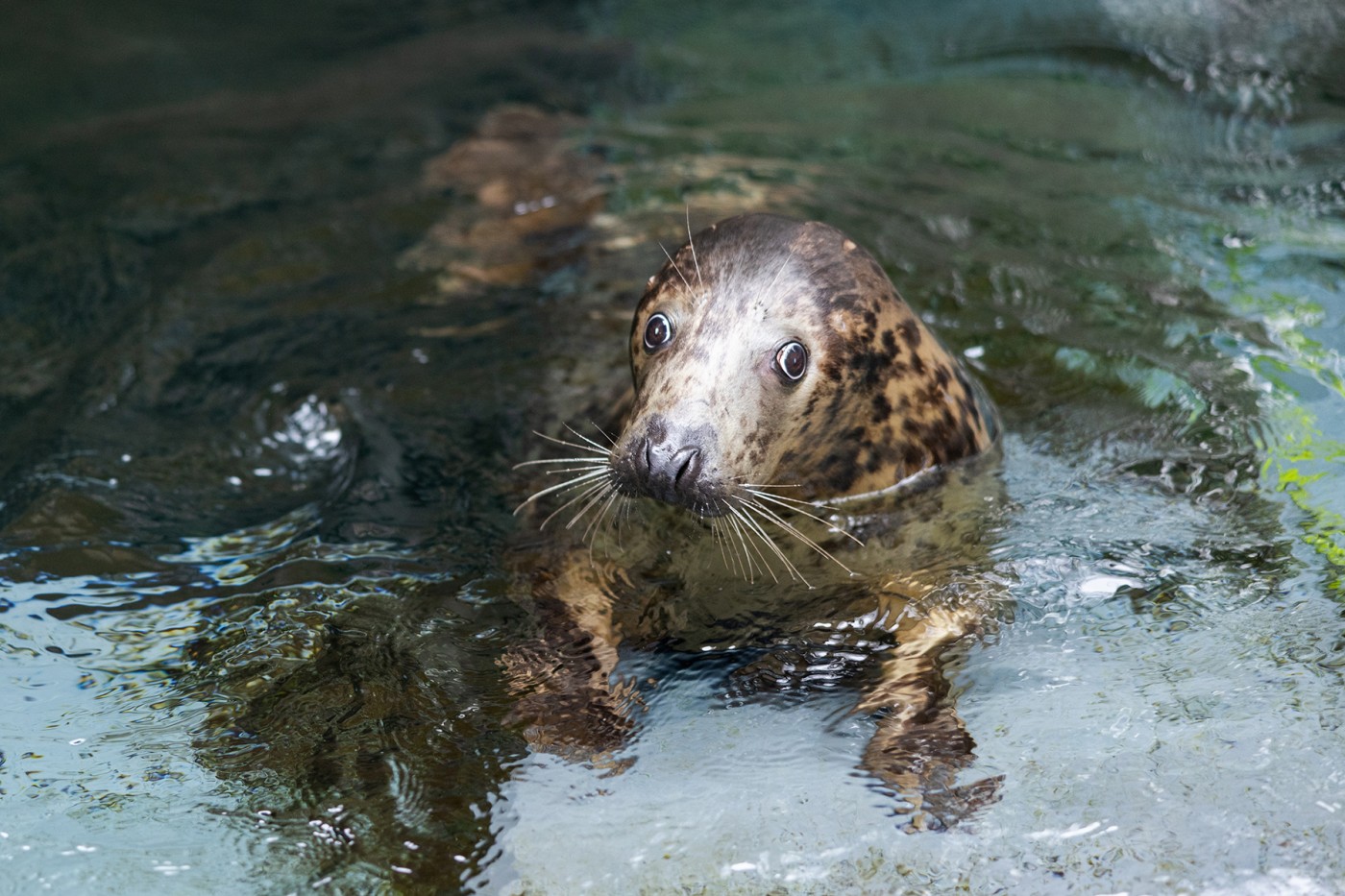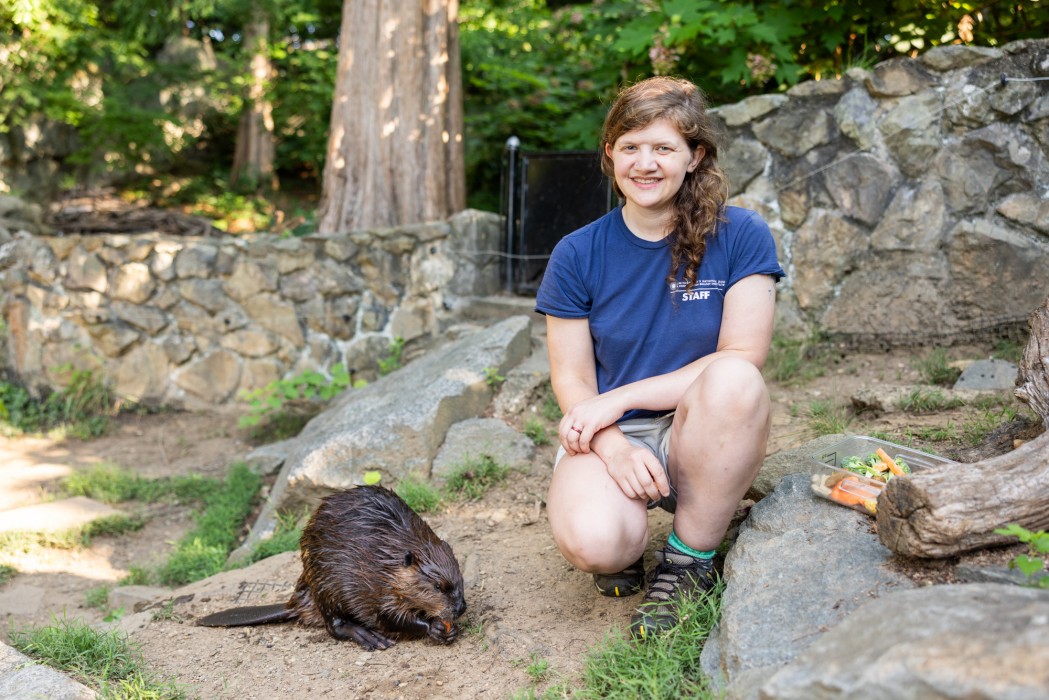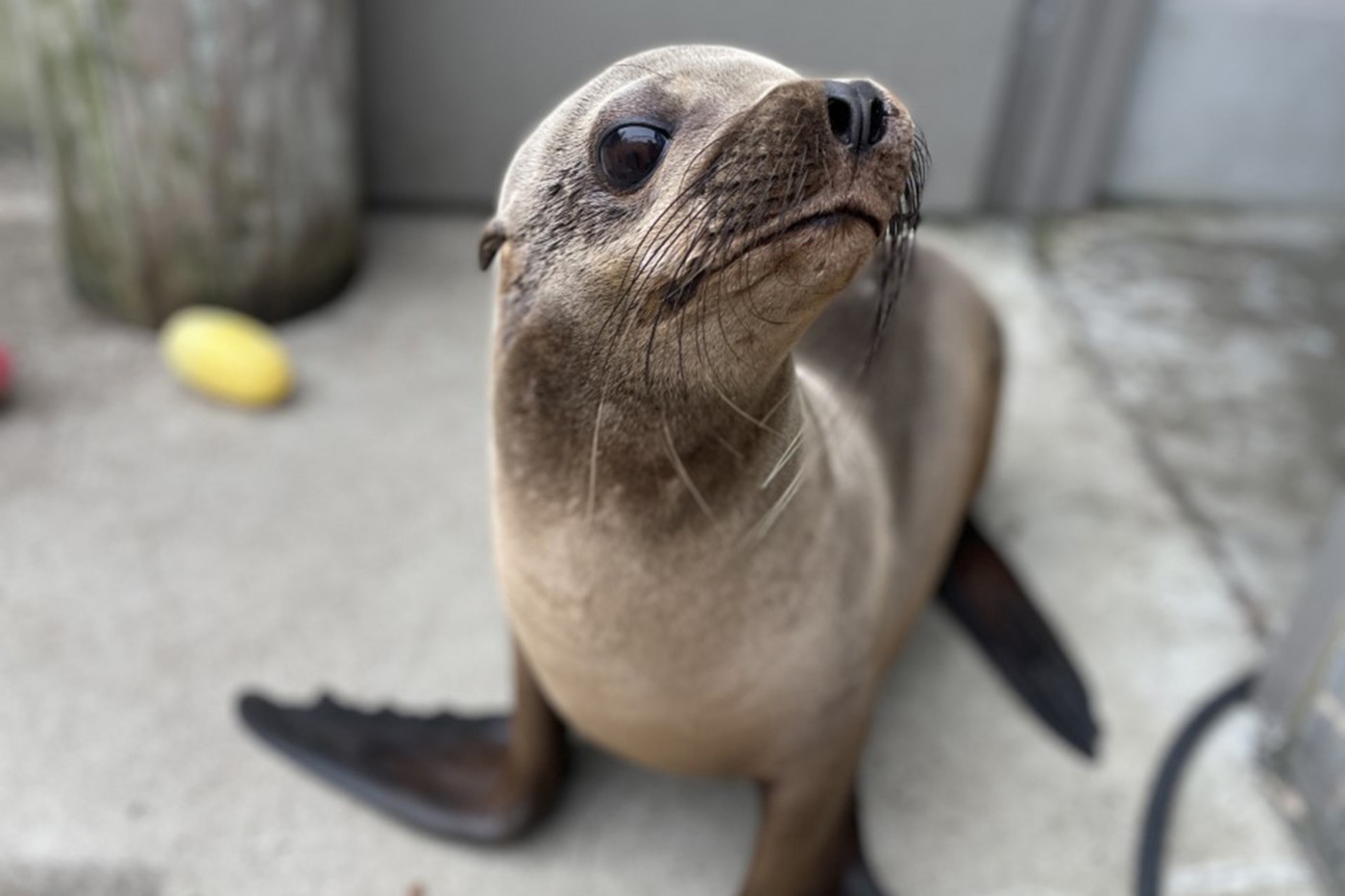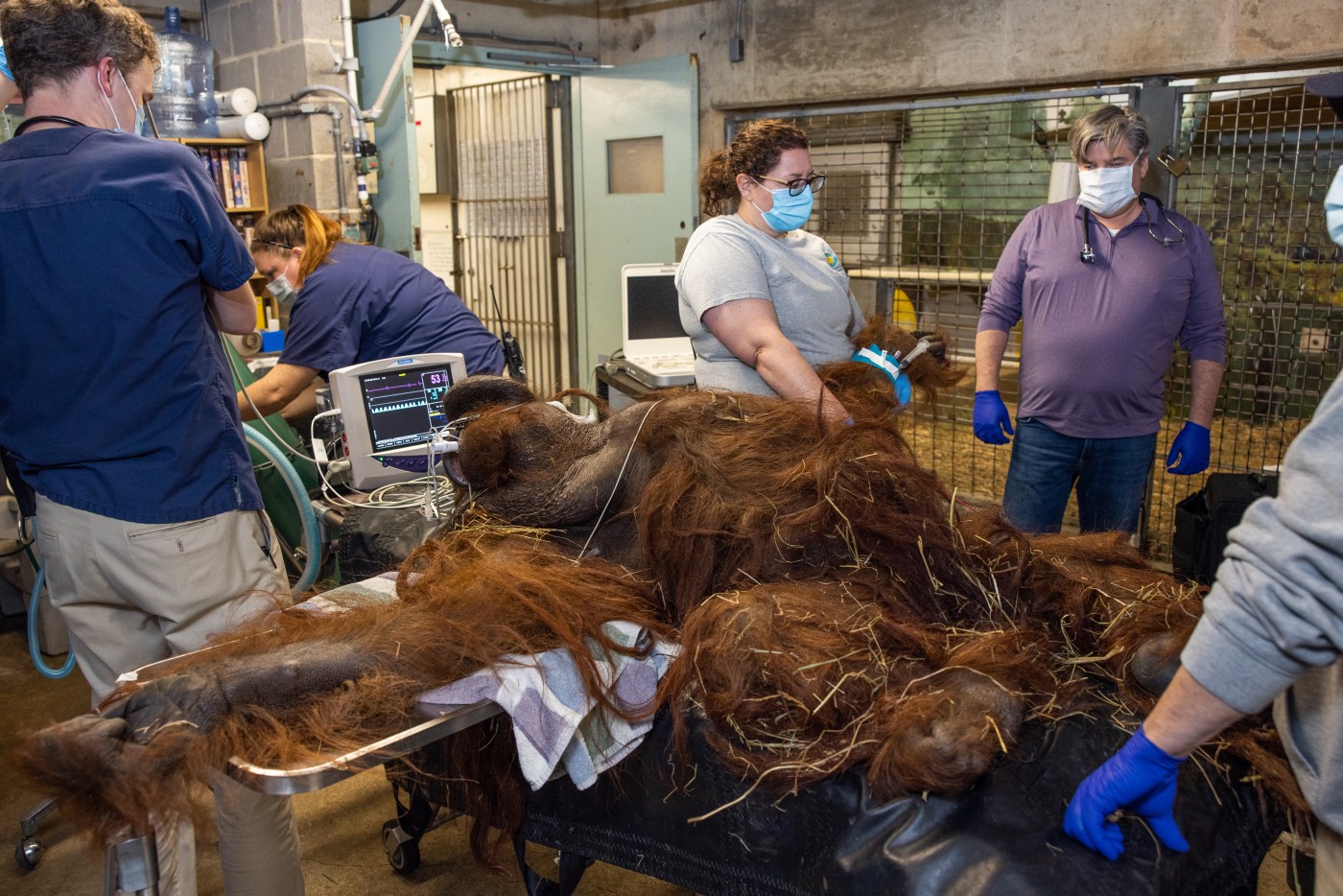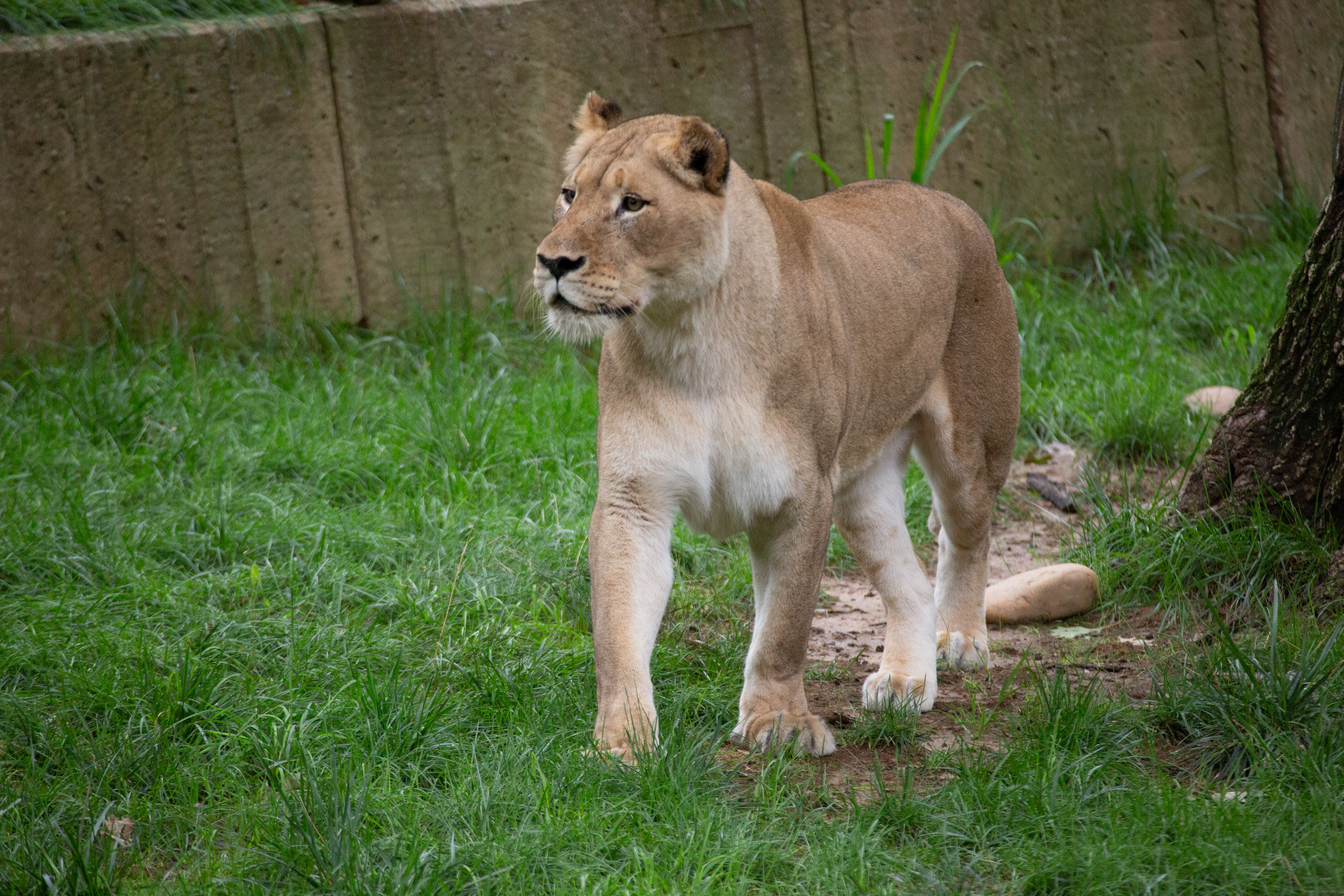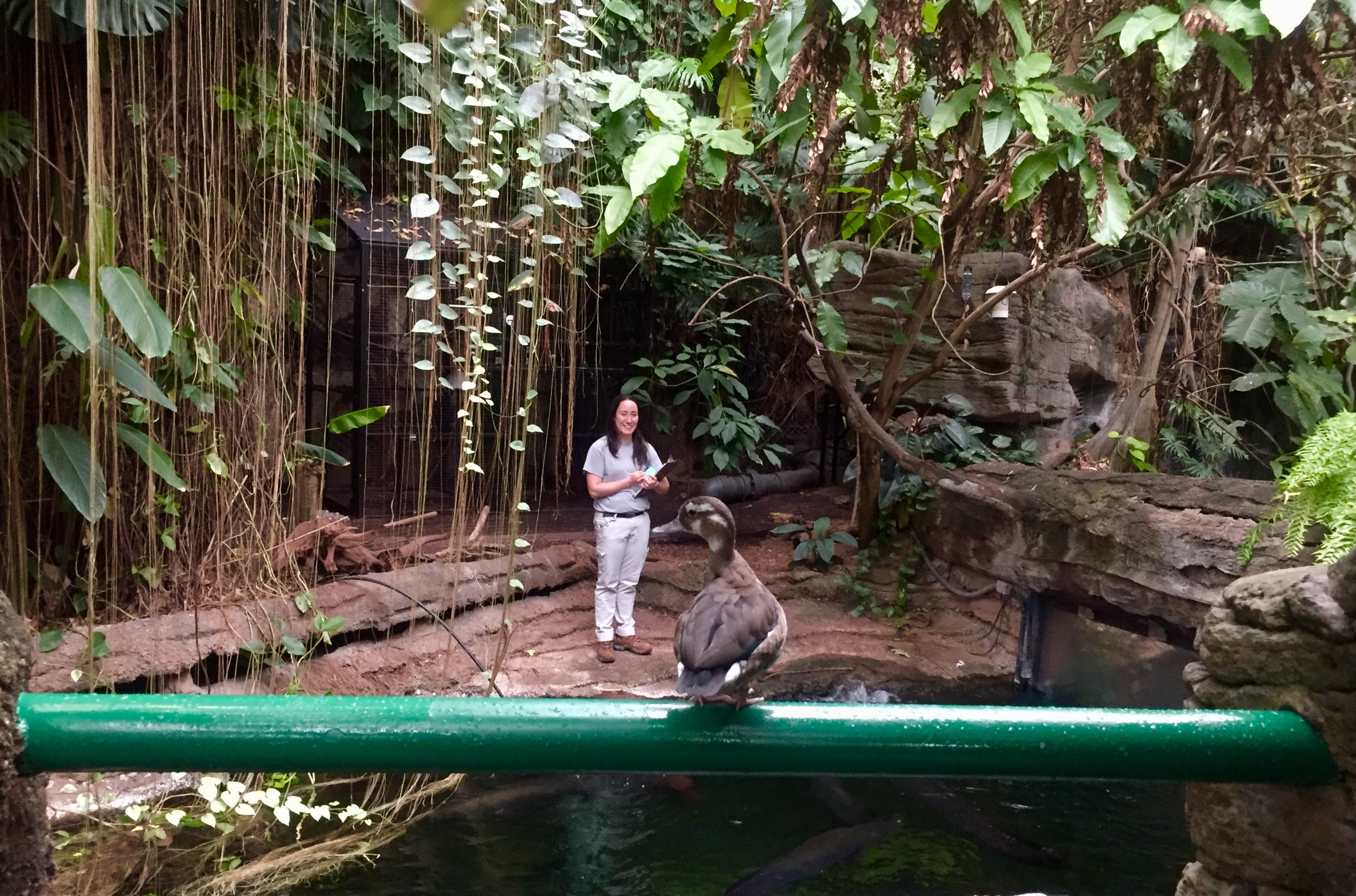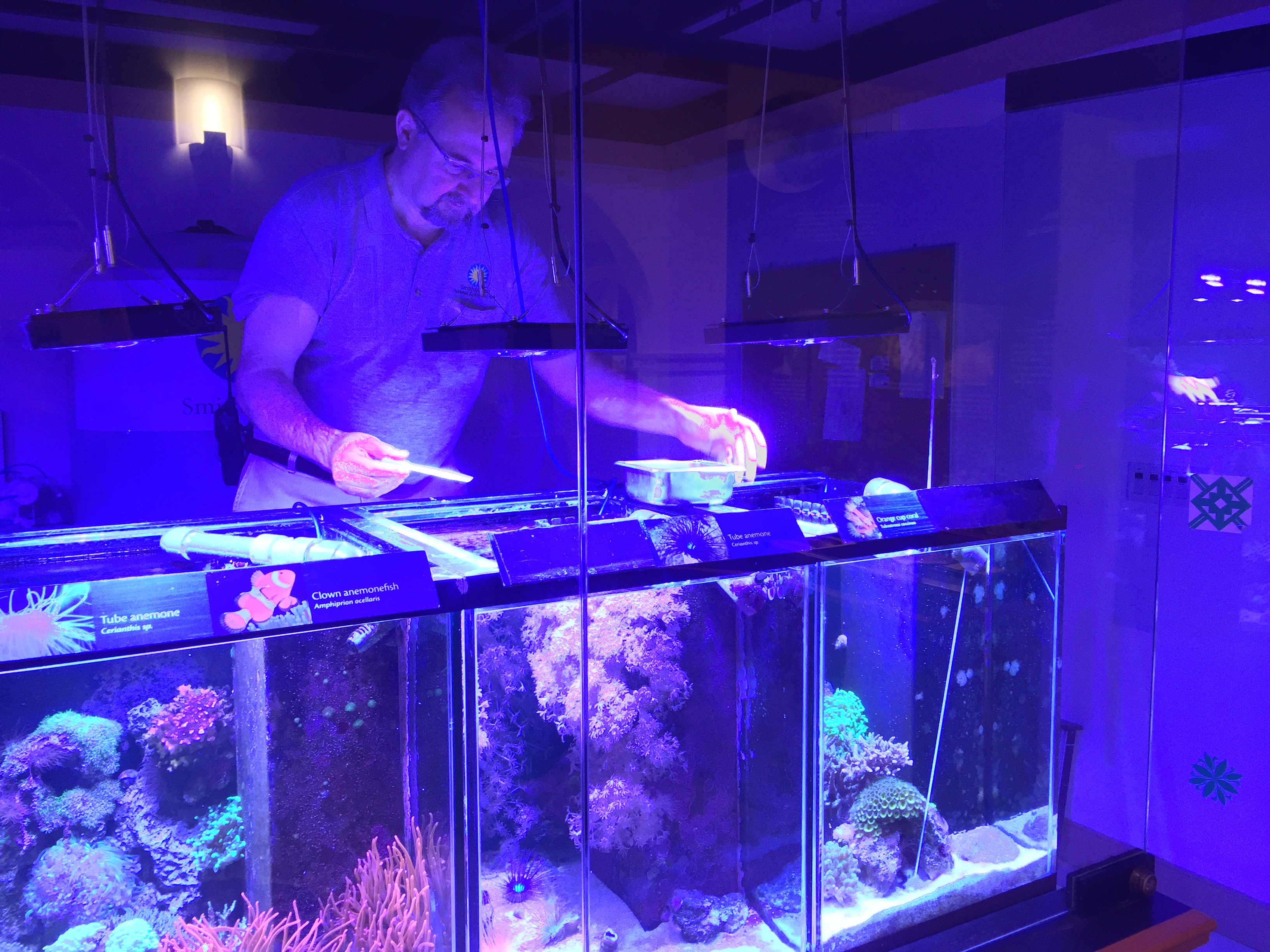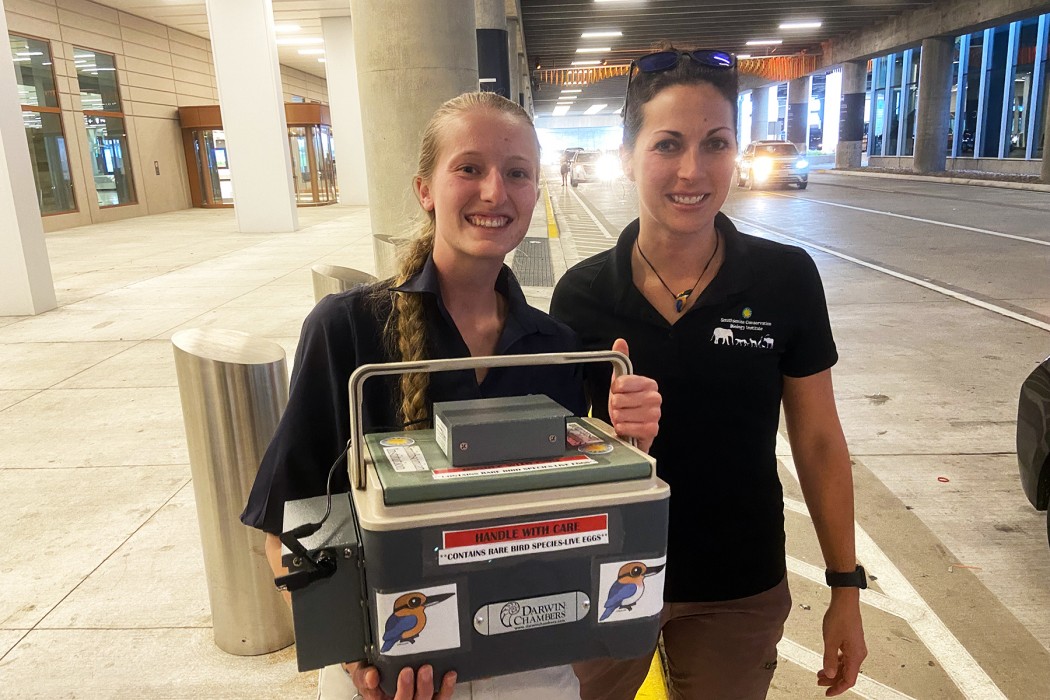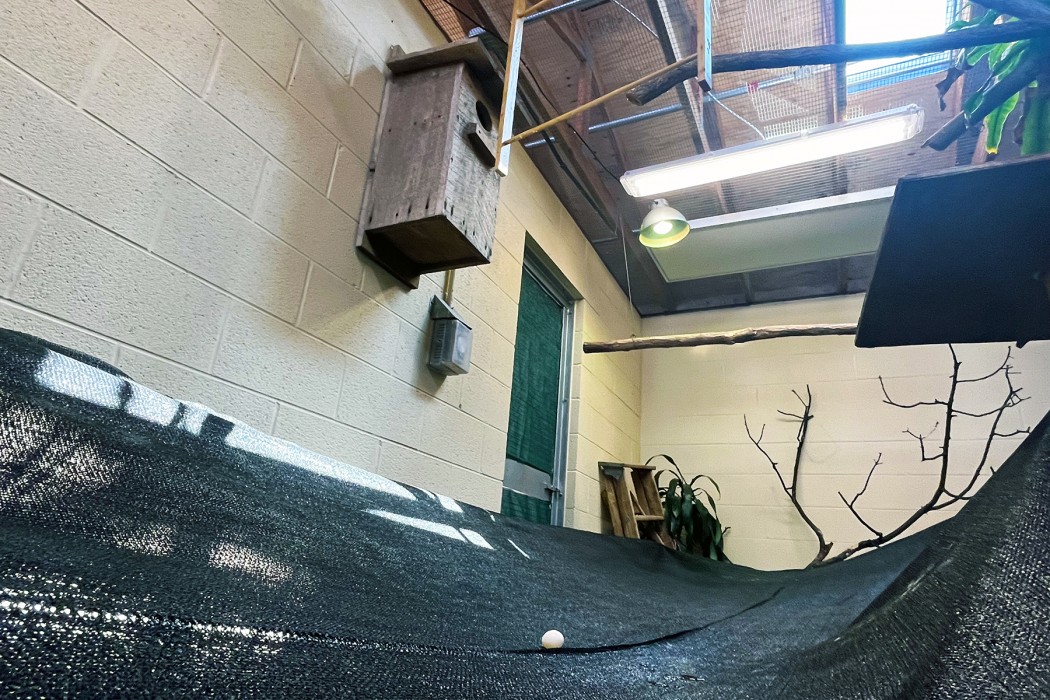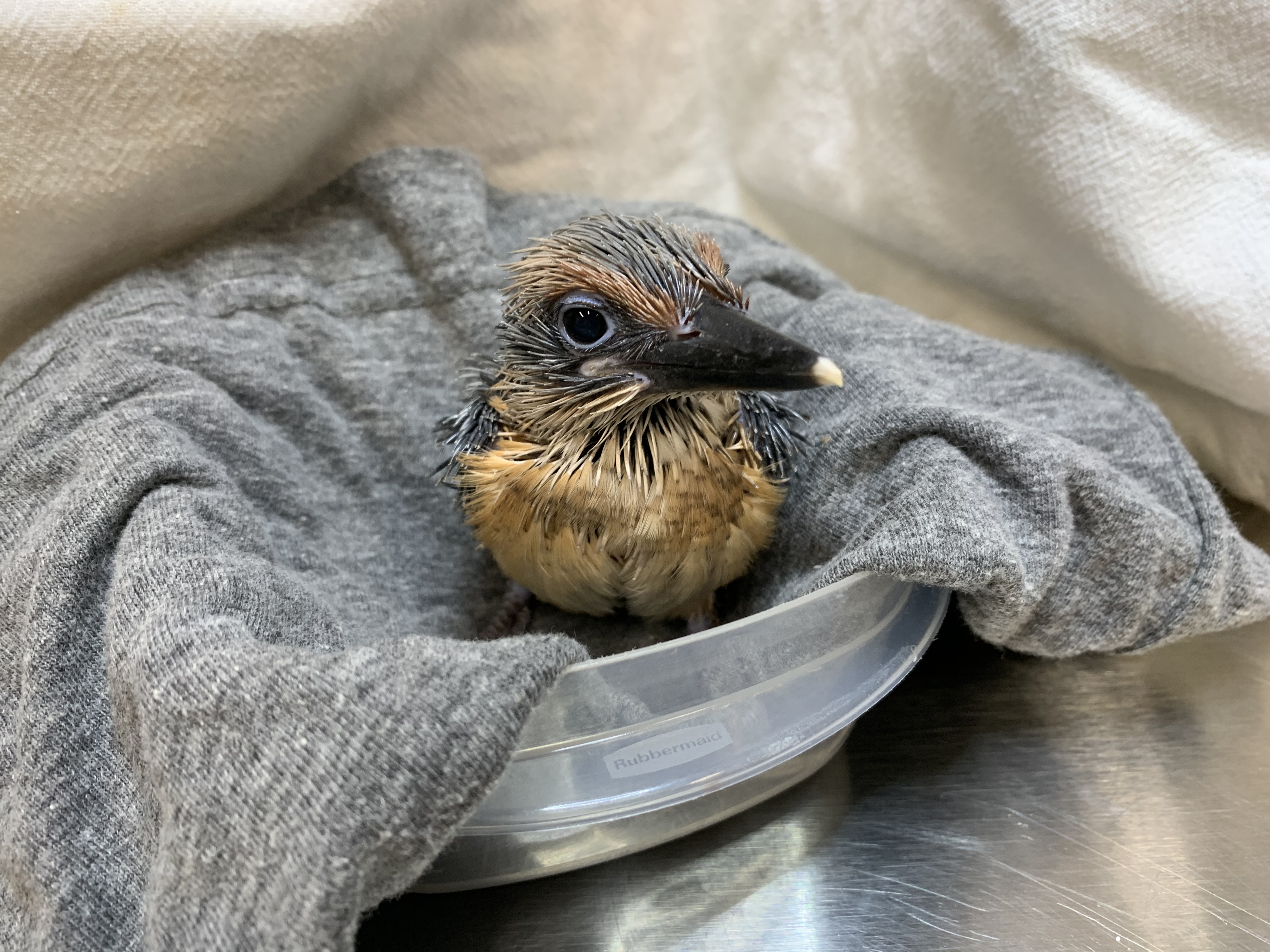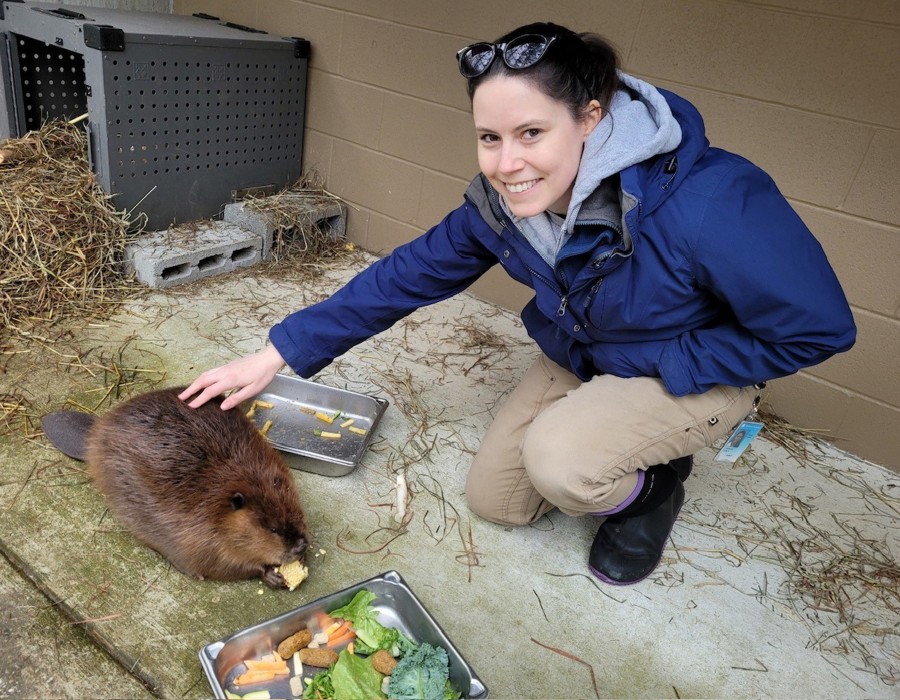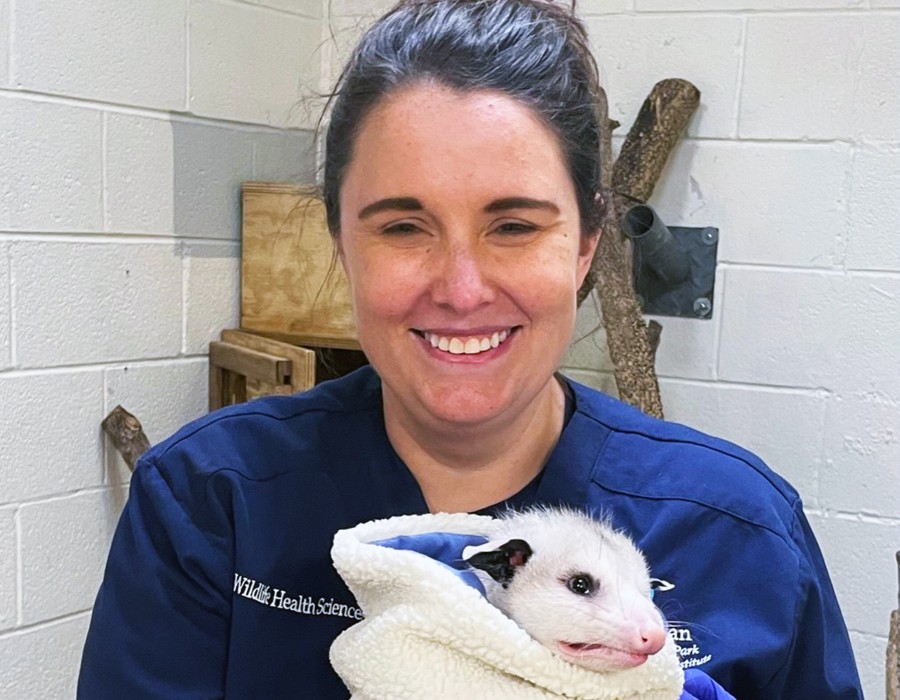Celebrating National Zookeeper Week: 2023
In honor of National Zookeeper Week, the Smithsonian’s National Zoo and Conservation Biology Institute is recognizing some of the dedicated professionals who go above and beyond for the animals in our care.
Africa Trail
“For an ostrich, just about every day is a new day. Keeper Tallie Wiles—who serves as our ostrich Linda’s primary caretaker—has done an excellent job of establishing Linda’s daily routine and communicating those details with the larger animal care team. She has trained Linda to voluntarily stand upon a scale, move between exhibit spaces on keepers’ cue, and participate in demonstrations. Tallie’s patient approach to training and conditioning Linda has allowed us to establish a husbandry routine, provide for her welfare and connect visitors with this popular animal.”—Tony Barthel, Curator
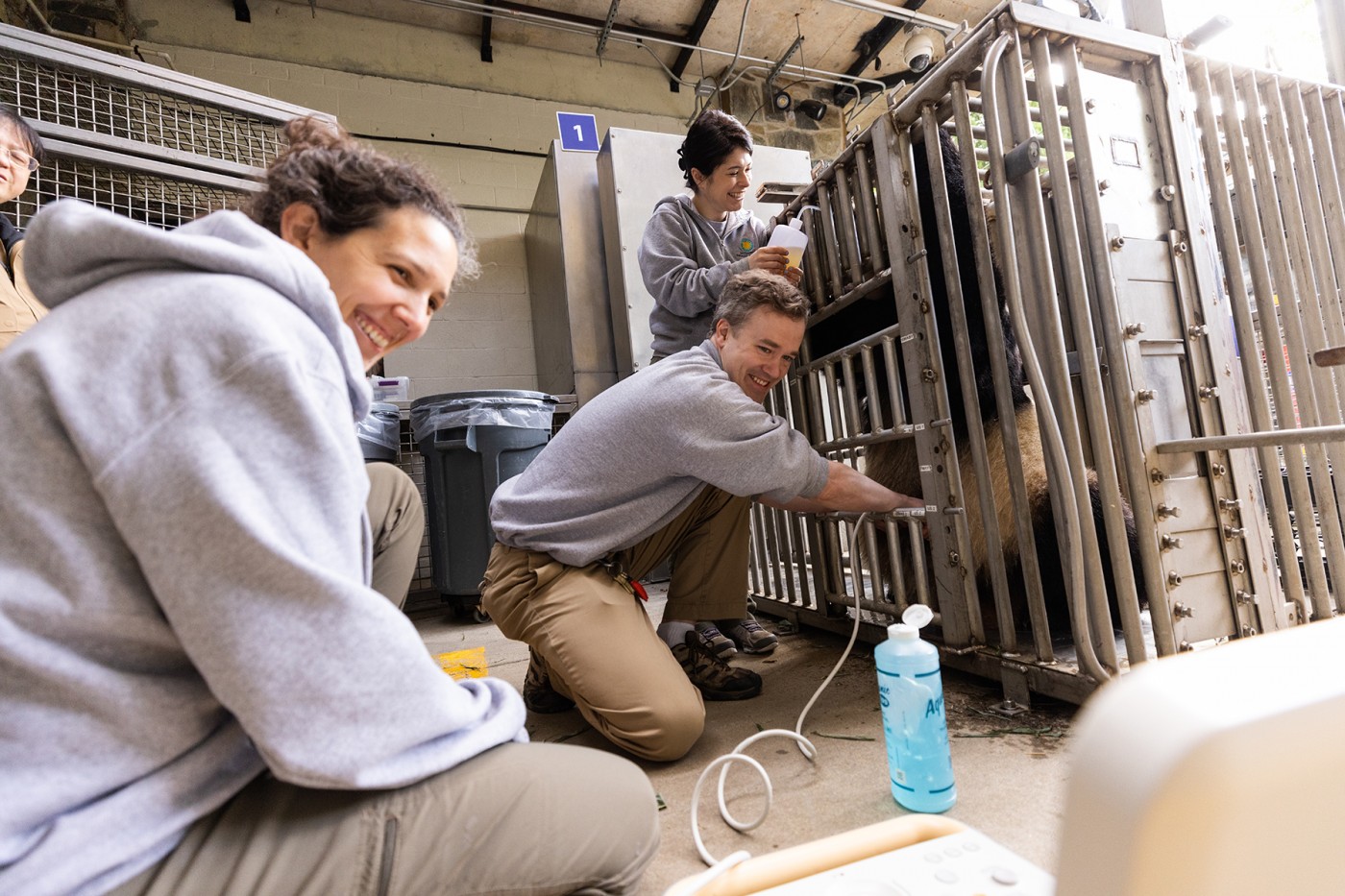
Asia Trail
How do you train a panda to voluntarily participate in blood draws and other medical exams? By building the bears’ trust and rewarding their participation with treats! Using operant conditioning, our giant panda, nutrition and veterinary teams can conduct check-ups without the need for anesthesia. Learn how our experts monitor Tian Tian, Mei Xiang and Xiao Qi Ji’s health in this update.
Bird House
“In March 2023, we celebrated the opening of our new Bird House! More than six months prior to the birds moving in, our team was hard at work setting up keeper and animal spaces inside the building and out on the surrounding plateau. We assembled countless pieces of furniture, prepared aviary spaces, arranged perching and attended to a million other details.
“In fall 2022, we relocated more than 150 birds from their holding spaces into the Bird House. This move was the culmination of more than five years of teamwork, dedication and never-ending resiliency. By early 2023, the Bird House was alive again with cheeps, quacks, tweets and more! This journey has been full of highs and lows, but it is good to be home. I am extremely proud of the Bird House team and the amazing work they did to successfully acclimate our animals to the new exhibit!”—Sara Hallager, Curator
Small Mammal House
“The Small Mammal House team is always trying to find new ways to keep our animals entertained while educating visitors. Keepers use enrichment—an important component of our holistic well-being program—to convey educational messages to our guests and encourage animals to use their natural behaviors. It also gives our team a chance to flex their creativity!
“Often, enrichment items are used to celebrate milestones, including birthdays, to showcase long-lived animals. On Mother’s Day, keepers created enrichment for our naked mole-rat queen, who rules the colony and can have more than 30 babies at a time. And, for International Family Equality Day, they created a rainbow paper mâché termite mound for tamanduas Manny and Cayenne to rip apart like they would in the wild!”—Kenton Kerns, Assistant Curator
Elephant Trails
“In November 2022, we welcomed Asian elephants Trong Nhi and Nhi Linh from the Rotterdam Zoo, following a recommendation to breed them with our bull, Spike, from the Association of Zoos and Aquariums. Our training program is core to our ability to provide for the health and welfare of our elephants. Some of our training cues vary slightly from those they learned at Rotterdam Zoo. Over the past nine months, keepers Robbie Clark, Ashley Fortner, Megan Boyd and Rebecca Riley have helped our new herd members successfully participate in our training program.
“Now that Trong Nhi and Nhi Linh can do core behaviors on cue, our team can build upon them and train more complex ones that allow us to monitor their vitals and provide them with the best possible husbandry and medical care. For example, both elephants participate in trunk washes, enabling us to monitor for elephant endotheliotropic virus (EEHV). Our team has made significant progress with blood collection training, which is critical for providing good veterinary care. Lastly, they have built in daily separations between Trong Nhi and Nhi Linh, which the elephants had not been trained for previously. This opens the door for more management and training opportunities going forward.
“Training Trong Nhi and Nhi Linh has required extensive planning, trial, feedback and adjustment. Throughout the process, Robbie, Ashley, Megan and Rebecca have made steady strides toward accomplishing our goals for these new elephants.”—Tony Barthel, Curator
American Trail
“Over the past year, the American Trail team has demonstrated exceptional teamwork and collaboration while undertaking the challenging task of acclimating three rescued and deemed non-releasable animals to their new home. Despite the unique needs and circumstances of each animal, including Jo-Jo, a blind juvenile grey seal, Ronin, a juvenile California sea lion with eating difficulties, and Juniper, a young, imprinted beaver, the team approached each situation with an unwavering dedication and a shared determination to provide the highest standard of care.
“The team's collaborative efforts were instrumental in formulating effective strategies to acclimate Jo-Jo, Ronin and Juniper to their new environments. Through open communication and brainstorming sessions, American Trail keepers devised innovative techniques to ensure that each animal felt secure and comfortable within their exhibits and formulated individual training plans that have resulted in many beneficial husbandry behaviors including hand-feeding, voluntary weights, receiving medications and crate training.
“The American Trail team’s ability to adapt and tailor their approaches to the individual needs of each animal is a testament to their expertise and commitment. Their efforts have not only enhanced the lives of the rescued animals in their care but have also served as a source of inspiration and education for visitors of all ages. Through their commitment to conservation, American Trail has raised awareness about the challenges faced by these incredible species and the importance of their protection.”—Rebecca Sturniolo, Assistant Curator
Primates
“The primate team was challenged with numerous complex animal medical cases this year, and every single keeper played a role in the successful outcome in each circumstance. Preparing for a routine great ape exam requires a lot of planning and training in order for everything to go smoothly, safely and be as stress-free as possible for the animal. Urgent, or non-routine, exams add an additional level of anxiety for the staff not only because of the concern for the compromised animal, but because there is not abundant time to prepare.
“This past year, the team was faced with urgent exams for our western lowland gorilla silverback, Baraka, and orangutans Iris, Lucy and Kyle. All of these procedures were accomplished in an efficient and safe manner, and all of the animals made full recoveries.
“In addition to these exams, the staff was confronted with a high-risk situation when pregnant gorilla Calaya experienced a premature amniotic sac rupture. The team rallied to conduct overnight watches, impromptu injections, and twice-daily ultrasounds until birth occurred. Through all of these scenarios, the primate team exhibited tremendous flexibility, perseverance, and teamwork.”—Becky Malinsky, Curator
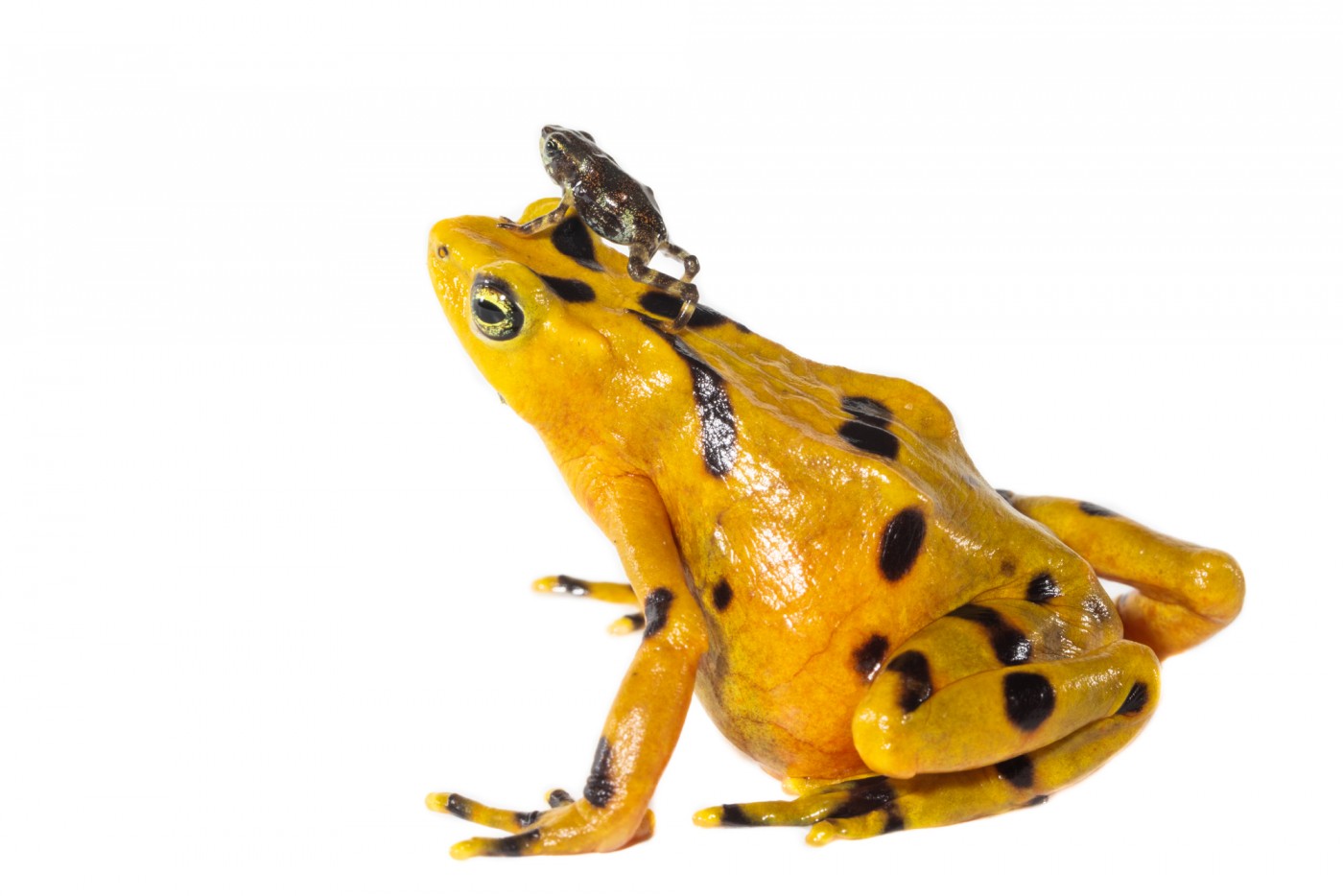
Reptile Discovery Center
“Reptile Discovery Center staff have persevered in the face of disruptions and changing directions related to building repairs and future renovations. Part of the preparations included vacating our normal office space for an extended period. This required extreme team effort to keep in touch with each other, find what we needed to do our jobs, and stay vigilant of all the things happening around us.
“In addition, the Reptile Discover Center is in the process of planning an extensive renewal of our building, which opened in 1931. Alongside curatorial staff, keepers played a significant role in providing their thoughts, ideas, dreams and feedback for this project. This is critical work as we help produce a fantastic metamorphosis of the Reptile Discovery Center and move toward a new era of efficiencies and experiences.”—Alan Peters, Curator
Great Cats and Kids’ Farm
“This past year has been a tough one for our animal care team. We mourned the loss of some dear friends, most notably our Hereford heifer, Rose, and African lions Luke and Naba. Saying goodbye to animals you have poured your heart and soul into is very hard. But, these times also highlight the resilient nature that defines the keepers of our Great Cats and Kids’ Farm teams!
“There were lots of tears, but there were also lots of smiles as the joy of caring for these magnificent animals was remembered. Most importantly, our team took care of each other and pulled together. Their solidarity brought about one of our happiest accomplishments in years: the birth of our Andean bear cubs, Ian and Sean.
“Thank you to the entire Great Cats and Kids’ Farm teams. The animals (and the humans who are lucky enough to know you) appreciate all that you do!”—Craig Saffoe, Curator
Amazonia
“This past year, the entire Amazonia team came together and managed an ever-changing and challenging schedule. When we welcomed a new team member, keepers took time out of their busy schedules to ensure our newest keeper was properly trained. At the same time, they took great care of our collection and maintained an excellent visitor experience. They handled a marathon of challenges with great professionalism, and I appreciate their efforts and determination.”—Rick Quintero, Acting Curator
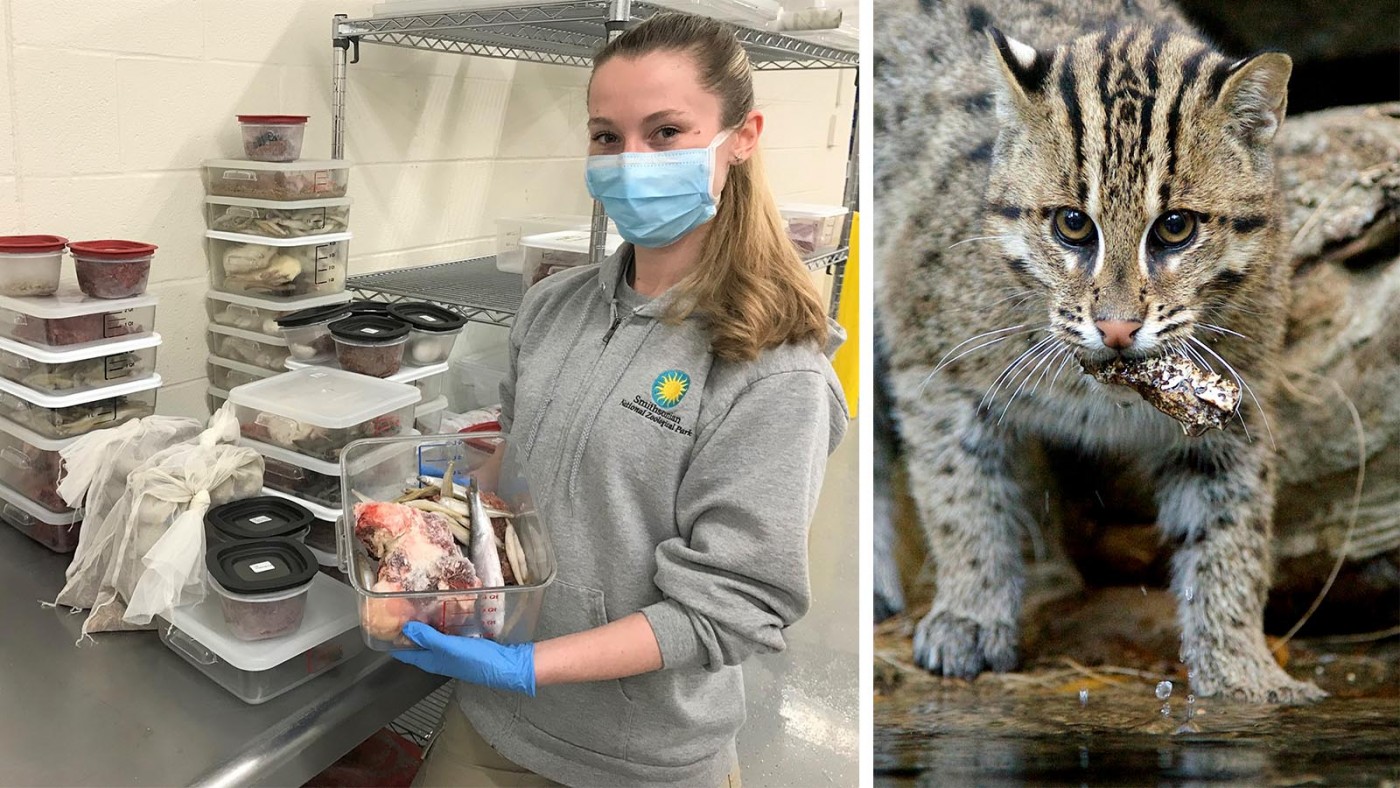
Department of Nutrition Sciences
“The Department of Nutrition Science team is responsible for providing species-appropriate, science-based and nutritionally balanced diets to the animals in its care. This includes the planning, procurement, handling, preparation and delivery of fresh carcass pieces. Preparing these diets is no small task, given the variety of items we feed out and the number of species that receive them.
"Carcass feeding—feeding portions of meat or whole (dead) prey—is part of a healthy and nutritionally complete diet for the carnivores in our collection, who have evolved to eat these foods. Internal organs are rich in nutrients that improve muscle tone. Skin, fur and bones are full of fiber and aid in oral and digestive health. And, these feedings give them an outlet to exercise their natural mental and physical behaviors. Presenting our carnivores with carcasses is one of the ways keepers and nutritionists continually enrich animals' lives.”—Bill Clements, Commissary Manager
Smithsonian Conservation Biology Institute
“With fewer than 140 siheks in the world, every egg—and chick—is incredibly important to the survival of the species. Because the adults are sensitive to disturbances in their enclosure, we try to be as hands-off with these birds as possible. This summer, our female surprised us by laying her eggs on a perch just outside the nest box. Unfortunately, the first two eggs fell and broke. When the female laid her third egg, keeper Julie Buschor moved quickly to save it. She hung a shade cloth under the perch, being mindful not to disturb the parents. When the egg fell, it was caught by the safety net. We were able to incubate the egg, transport it to Sedgwick County Zoo, and successfully hatch the chick—all thanks to Julie’s quick and innovative thinking!”—Erica Royer, aviculturist
Wildlife Health Sciences
“As part of the Wildlife Health Sciences team, keepers Erin Stewart and Sarah Napolitano do an amazing job preparing for all our new arrivals and caring for them during their quarantine period. These keepers have to be jacks-of-all-trades: setting up exhibits, planning safe enrichment and acclimating the animals to their new environments. Since they handle quarantine for all of our animal care departments, they have to specialize in many species. They also lend a hand with any husbandry care needs for hospitalized patients. We really love our keepers and the amazing job they do!”—Kristine Williams, Biological Sciences Veterinary Technician
This story appears in the August 2023 issue of National Zoo News.

